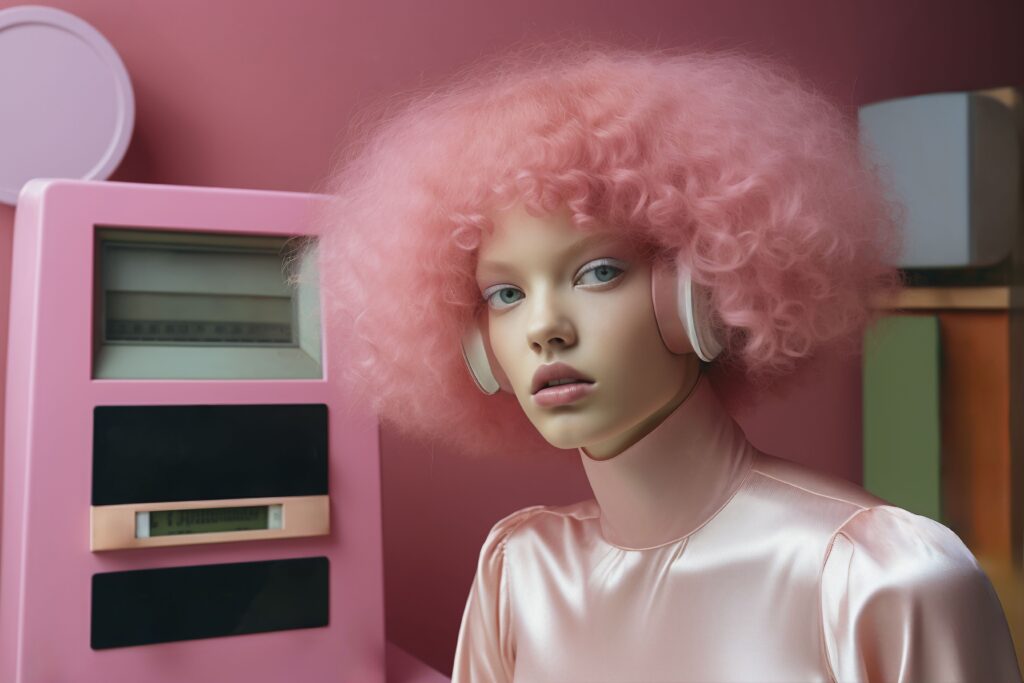In 2025, fashion no longer lives solely on the runway or social media — it thrives in digital worlds. From gaming platforms to the metaverse and AI-generated influencers, virtual avatars are reshaping how we express identity, especially when it comes to hair. Surprisingly, one of the biggest ripple effects? A rising wave of real-life wig trends inspired by digital fashion.
Let’s explore how digital personas are redefining wig styling and why avatars are now the unexpected tastemakers of hair fashion.
Avatars as the New Fashion Icons
With platforms like Roblox, The Sims, ZEPETO, and VRChat gaining popularity, users are creating avatars that reflect fantasy versions of themselves — bold, colorful, and uninhibited. These digital figures aren’t limited by societal norms, workplace dress codes, or even gravity.
What does that mean for real-world beauty? Women and men are now exploring wigs that mimic their avatars — from pastel pink bobs to silver undercuts and even holographic-inspired synthetic hair.
“I used to think a bright blue wig was too much for real life,” says Jada, a 28-year-old gamer from New York. “But after wearing it on my avatar every day, I finally bought one — and I loved it.”
Metaverse Meets Mainstream Wig Fashion
Virtual fashion houses like DressX and digital-first brands like The Fabricant are pushing high fashion into the metaverse — and hairstyles are a big part of the equation. As digital fashion collections incorporate futuristic hair designs, real-world wig manufacturers are adapting quickly.
Expect to see:
- Iridescent fiber wigs mimicking digital textures
- Sculptural hair shapes once seen only in games
- Neon glow wigs inspired by cyberpunk and VR aesthetics
Many of today’s best-selling synthetic wigs are modeled after these fantasy styles.
Social Media Filters and AI-Generated Looks
Snapchat, Instagram, and TikTok filters let users try on digital wigs in real-time. What used to be playful experimentation has now become a styling trial run.
Consumers try out wig colors virtually before buying. If they love the way an AI filter makes them look in icy lilac waves or ombré mermaid locks, they’re more likely to search for that same wig in real life.
Wig retailers are catching on. Some brands now offer AR-based virtual try-ons — merging digital avatars with practical shopping tools.
Cosplay, Gaming, and Pop Culture Crossovers
Characters from video games like Final Fantasy, Genshin Impact, and League of Legends are influencing wig buyers more than ever. Fans want to look like their virtual heroes — not just at conventions, but in everyday life.
As a result, wig trends in 2025 include:
- Oversized anime-inspired bangs
- Multi-tone split-dye styles
- Fantasy curls and spiked cuts straight out of RPGs
This evolution shows how cosplay and mainstream fashion are blurring, led by the power of digital personas.
The Psychological Shift: Self-Expression without Limits
Perhaps the most powerful influence virtual avatars have on wig trends is psychological. Digital worlds give people permission to try bold looks — without judgment. This confidence often spills into the real world, encouraging more individuals to experiment with wigs for style, identity, and empowerment, not just necessity.
For people navigating gender identity, hair loss, or personal reinvention, virtual avatars often act as test labs for transformation.
Final Thoughts: A Digital-Driven Wig Revolution
As our online lives continue to intertwine with the physical world, virtual avatars will remain key drivers in wig fashion. The freedom to experiment digitally is breaking barriers in real-life beauty standards — and wigs are at the center of this exciting shift.
Whether you’re channeling a neon-haired avatar from your favorite VR game or testing AI-powered filters before your next hair purchase, one thing is clear: the future of wigs is as bold, creative, and limitless as the virtual worlds that inspire them.


